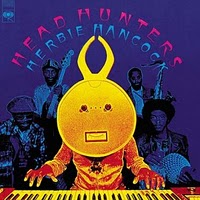 Essential jazz-funk and one the high points in the impressive career of the genius that is Herbie Hancock. Tackling jazz-funk head on and making the genre’s defining LP. Funky music with improvised solos and high level musicianship from a stellar cast of support players. Everyone who has a passing interest in jazz or funk should own a copy of this LP. For the hip hop lovers its always great to hear how many familiar samples you come across as you listen to the music. –Jon
Essential jazz-funk and one the high points in the impressive career of the genius that is Herbie Hancock. Tackling jazz-funk head on and making the genre’s defining LP. Funky music with improvised solos and high level musicianship from a stellar cast of support players. Everyone who has a passing interest in jazz or funk should own a copy of this LP. For the hip hop lovers its always great to hear how many familiar samples you come across as you listen to the music. –Jon
Jazz
Duke Ellington “Far East Suite” (1967)
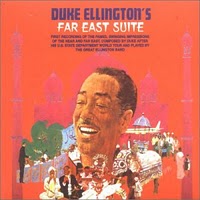 After touring the Middle and Far East, Ellington brought a little of the local music back with him and recorded Far East Suite. My first impression of Far East Suite: Oh my god. Second impression? Same. Listen to “Blue Pepper (Far East of the Blues)” and tell me with a straight face that you don’t think the exact same thing. You couldn’t do it. –Rob
After touring the Middle and Far East, Ellington brought a little of the local music back with him and recorded Far East Suite. My first impression of Far East Suite: Oh my god. Second impression? Same. Listen to “Blue Pepper (Far East of the Blues)” and tell me with a straight face that you don’t think the exact same thing. You couldn’t do it. –Rob
Bobby Hutcherson “Dialogue” (1965)
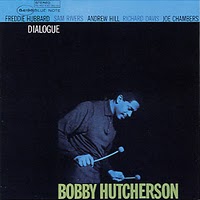 This is quite an allstar lineup: Bobby Hutcherson(vibes), Andrew Hill (piano), Sam Rivers (sax), Joe Chambers (drums), Richard Davis (bass), Freddie Hubbard (trumpet). Bobby Hutcherson made Dialogue after spending time recording with Eric Dolphy. That’s probably why this album feels a bit quirky and out of joint, but it’s also why it’s so good. For the most part this is great post-bop with an avant-garde flavor. The third and fourth tracks are avant-garde with a post-bop flavor. Richard Davis’ bass work has impressed me quite often and Dialogue is no exception. Frankly, Andrew Hill’s playing on the title track scares me. [It’s that good.] There’s no other way to describe it. –Rob
This is quite an allstar lineup: Bobby Hutcherson(vibes), Andrew Hill (piano), Sam Rivers (sax), Joe Chambers (drums), Richard Davis (bass), Freddie Hubbard (trumpet). Bobby Hutcherson made Dialogue after spending time recording with Eric Dolphy. That’s probably why this album feels a bit quirky and out of joint, but it’s also why it’s so good. For the most part this is great post-bop with an avant-garde flavor. The third and fourth tracks are avant-garde with a post-bop flavor. Richard Davis’ bass work has impressed me quite often and Dialogue is no exception. Frankly, Andrew Hill’s playing on the title track scares me. [It’s that good.] There’s no other way to describe it. –Rob
Miles Davis “Nefertiti” (1968)
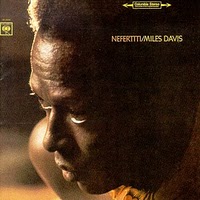 Recorded only a few weeks after Sorcerer, Miles Davis cuts the music even furthur back so often the polished white bone behind the sound is revealed: this gives the music a gleaming purity but also a sense of loss, a lot of that which gives music its emotional meaning has been jetisoned. Herbie Hancock is perhaps the most Milesian of Davis’s piano/keyboard players (perhaps the most Milesian of all Davis’s collaborators): although tempermentally different, lacking Davis’s moody intensity, but having a lightness of touch that Davis lacked, Hancock is the musician who seems most at ease in parring everything back, only playing one note where other musicians would have played five. On this album there are only a couple of tracks where he takes the traditional role in the rhythm section, instead only coming forward, like the horn players, to state the theme at the beginning and end of the number and for his featured section. His playing, as in all the mid-1960s Quintet recordings, shines with an astonishing precision, the sense that each note is fully determined by his conception of the piece, that it is the only possible choice, the only note that could have been played. Tony Williams plays with an astonishing agression (listen to Nefertiti, Hand Jive, Madness): as with Hancock, a good argument could be made that the recordings with the Miles Davis Quintet in the mid-1960s contain his greatest performances. Ron Carter, although impecable, plays with a greater simplicity compared to the Sorcerer sessions (but then his bass on Sorcerer is perhaps the high point of his career) – it could be argued that this is a good thing, but for me it is part of the release of the internal tension that made the previous Quintet studio recordings so remarkable. The opening title track is a fascinating experiment where the two horn players, rather than the rhythm section, provide the basic structure of the piece, repeating the basic melody time after time: while this gives the other three musicians great freedom to operate it also means a complete loss in the playing of Davis and Shorter (who throughout the rest of the album are superb) – and with repeated listenings I personally find it annoying. Compared to the previous studio albums Nefertiti shows a certain loss in its texture, but in hindsight can see it as a fascinating part of Davis’s continual evolution, one that is already pointing to In a Silent Way. –Nick
Recorded only a few weeks after Sorcerer, Miles Davis cuts the music even furthur back so often the polished white bone behind the sound is revealed: this gives the music a gleaming purity but also a sense of loss, a lot of that which gives music its emotional meaning has been jetisoned. Herbie Hancock is perhaps the most Milesian of Davis’s piano/keyboard players (perhaps the most Milesian of all Davis’s collaborators): although tempermentally different, lacking Davis’s moody intensity, but having a lightness of touch that Davis lacked, Hancock is the musician who seems most at ease in parring everything back, only playing one note where other musicians would have played five. On this album there are only a couple of tracks where he takes the traditional role in the rhythm section, instead only coming forward, like the horn players, to state the theme at the beginning and end of the number and for his featured section. His playing, as in all the mid-1960s Quintet recordings, shines with an astonishing precision, the sense that each note is fully determined by his conception of the piece, that it is the only possible choice, the only note that could have been played. Tony Williams plays with an astonishing agression (listen to Nefertiti, Hand Jive, Madness): as with Hancock, a good argument could be made that the recordings with the Miles Davis Quintet in the mid-1960s contain his greatest performances. Ron Carter, although impecable, plays with a greater simplicity compared to the Sorcerer sessions (but then his bass on Sorcerer is perhaps the high point of his career) – it could be argued that this is a good thing, but for me it is part of the release of the internal tension that made the previous Quintet studio recordings so remarkable. The opening title track is a fascinating experiment where the two horn players, rather than the rhythm section, provide the basic structure of the piece, repeating the basic melody time after time: while this gives the other three musicians great freedom to operate it also means a complete loss in the playing of Davis and Shorter (who throughout the rest of the album are superb) – and with repeated listenings I personally find it annoying. Compared to the previous studio albums Nefertiti shows a certain loss in its texture, but in hindsight can see it as a fascinating part of Davis’s continual evolution, one that is already pointing to In a Silent Way. –Nick
Soft Machine “Third” (1970)
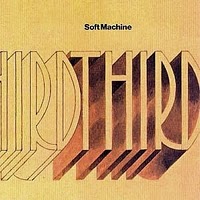 A dark, soupy jazz-fusion concoction, Third sheds away Soft Machine’s psychedelic skin in favor of four side-long monstrosities that stumble across the landscape like a disoriented and angry mammoth, spitting forth an archaic language and swinging drunken fists. Opener “Facelift” features the sounds of this electronic beast slowly awakening to the sounds of some prehistoric ritual, while side two offers the floating jazz-rock haze of “Slightly All the Time.” The only vocal track, “The Moon in June,” flows in a stream of consciousness both lyrically and musically, alternating confusion with moments of clarity, and it’s the best track here. “Out-Bloody-Rageous” closes with cues to Terry Reilly in a cascade of synths set up against more medieval jazz noodlery. While Third gets the job done, it takes too long to do it, and can be recommended only to those with the time and patience to decode its puzzling utterances. –Ben
A dark, soupy jazz-fusion concoction, Third sheds away Soft Machine’s psychedelic skin in favor of four side-long monstrosities that stumble across the landscape like a disoriented and angry mammoth, spitting forth an archaic language and swinging drunken fists. Opener “Facelift” features the sounds of this electronic beast slowly awakening to the sounds of some prehistoric ritual, while side two offers the floating jazz-rock haze of “Slightly All the Time.” The only vocal track, “The Moon in June,” flows in a stream of consciousness both lyrically and musically, alternating confusion with moments of clarity, and it’s the best track here. “Out-Bloody-Rageous” closes with cues to Terry Reilly in a cascade of synths set up against more medieval jazz noodlery. While Third gets the job done, it takes too long to do it, and can be recommended only to those with the time and patience to decode its puzzling utterances. –Ben
Don Ellis “Don Ellis at Fillmore” (1970)
 Don Ellis at Fillmore will satisfy even the most intense and discerning cravings that people might have to hear more music like Frank Zappa’s The Grand Wazoo and Waka/Jawaka. Ellis explores all things quirky with his Jazz ensemble. There’s solos galore. Many of the songs are lengthy. There’s comedic thrills. They go so far as to inject “Hey Jude” with a syringe of heroine and steroids. The room may be spinning but Jude could still kick your ass. The audience gets messed with severely. Pretty much every Zappa fan should own this music. Ellis was probably one of the main people that influenced Zappa to make the move from his early phase (Freak Out! to Uncle Meat) into trying something like Hot Rats all of the sudden. A copy of Don Ellis at Fillmore surely must have been on the Zappa tour bus. –Rob
Don Ellis at Fillmore will satisfy even the most intense and discerning cravings that people might have to hear more music like Frank Zappa’s The Grand Wazoo and Waka/Jawaka. Ellis explores all things quirky with his Jazz ensemble. There’s solos galore. Many of the songs are lengthy. There’s comedic thrills. They go so far as to inject “Hey Jude” with a syringe of heroine and steroids. The room may be spinning but Jude could still kick your ass. The audience gets messed with severely. Pretty much every Zappa fan should own this music. Ellis was probably one of the main people that influenced Zappa to make the move from his early phase (Freak Out! to Uncle Meat) into trying something like Hot Rats all of the sudden. A copy of Don Ellis at Fillmore surely must have been on the Zappa tour bus. –Rob
Eddie Harris “Is It In” (1974)
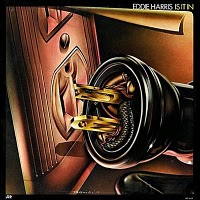 If you dig funk, two words: “Funkaroma” and “Is it In.” (Okay, that’s four words.) “Funkaroma” kicks off the album with Eddie and his plugged in tenor going off on this sixty second intro that just oozes with funky soul. At the one minute mark the band kicks in and funk perfection ensues with everybody firmly on the one. The title track is perfectly realized funk from :01. Guitarist Ronnie Muldrow lays it on thick with this breakneck riff and the band does the rest with Eddie wailing along, electrified, over the top. The drum chant “It’s War” and gooey “Space Commercial” could both easily fit on a 70’s funky Bruton Sound Library LP. Although most of Eddie’s albums from this period are uneven in overall mood and performance (this one is no different), Eddie, his electric sax, and a group of accomplished stateside jam-hounds give funk true meaning with these songs. –A
If you dig funk, two words: “Funkaroma” and “Is it In.” (Okay, that’s four words.) “Funkaroma” kicks off the album with Eddie and his plugged in tenor going off on this sixty second intro that just oozes with funky soul. At the one minute mark the band kicks in and funk perfection ensues with everybody firmly on the one. The title track is perfectly realized funk from :01. Guitarist Ronnie Muldrow lays it on thick with this breakneck riff and the band does the rest with Eddie wailing along, electrified, over the top. The drum chant “It’s War” and gooey “Space Commercial” could both easily fit on a 70’s funky Bruton Sound Library LP. Although most of Eddie’s albums from this period are uneven in overall mood and performance (this one is no different), Eddie, his electric sax, and a group of accomplished stateside jam-hounds give funk true meaning with these songs. –A
Gene Harris “Astral Signal” (1974)
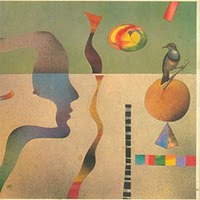 Gene Harris really did come into himself when he ditched the Three Sounds and went into the ‘70s with full electronic funkiness. Side one of this album is mostly taken up with a medley of tunes that start with a psyched out “Prelude”, then moves through a hypnotically beautiful tribute to summer (“Summer (the First Time)”, Rebato Summer” and “I Remember Summer”), then once your all tripped out it kicks into the most incredibly dirty and heavy version of “Don’t Call Me Nigger Whitey” that will literally take your breath away. After the first gap on the side you get the killer rare-groove gem “Losalamitoslatinfunklovesong”, and even though this is on loads of compilations you still can’t beat hearing it in its original setting. Lastly you get the only straight jazz tune on the side, the solo piano piece “My Roots”. Side two is a little more subdued, but still no less amazing. You get the Harvey Mason composed/arranged “Higga-Boom” on this side, which though I’m not too mad on, still can’t deny its amazing driving groove. This album really is a jazz-funk/fusion masterpiece, definitely one of the most amazing finds I’ve come across in recent digs. –Nick
Gene Harris really did come into himself when he ditched the Three Sounds and went into the ‘70s with full electronic funkiness. Side one of this album is mostly taken up with a medley of tunes that start with a psyched out “Prelude”, then moves through a hypnotically beautiful tribute to summer (“Summer (the First Time)”, Rebato Summer” and “I Remember Summer”), then once your all tripped out it kicks into the most incredibly dirty and heavy version of “Don’t Call Me Nigger Whitey” that will literally take your breath away. After the first gap on the side you get the killer rare-groove gem “Losalamitoslatinfunklovesong”, and even though this is on loads of compilations you still can’t beat hearing it in its original setting. Lastly you get the only straight jazz tune on the side, the solo piano piece “My Roots”. Side two is a little more subdued, but still no less amazing. You get the Harvey Mason composed/arranged “Higga-Boom” on this side, which though I’m not too mad on, still can’t deny its amazing driving groove. This album really is a jazz-funk/fusion masterpiece, definitely one of the most amazing finds I’ve come across in recent digs. –Nick
Sun Ra “Space Is the Place” (1973)
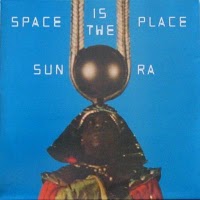 If you like your big bands disciplined, tidy and marching together, then Sun Ra is not for you. They just don’t play that way on Saturn. It feels much more like the band are tumbling down a hill, musical instruments all over, but they are all falling in the same direction and by some miracle they never thump into each other, but are always dodging around, falling through each other’s legs. The first track, the first side, is held together by a simple rhythm played by bass, baritone sax and bass clarinet, and a singer or two repeatedly singing Space Is the Place – but then they are assaulted by percussion, keyboards, shouts and just noise, a chaos of sound that is always threatening to spin the music away into the darkness of space. At times the rhythm does break down, but it always finally returns. At first I thought the 21 minutes was a bit excessive but as I returned to the music, listening to the constantly shifting tensions within the sound, I realised that 21 minutes was exactly what it needed. The album continues with variations of this tension. The featured trumpet, tenor and piano on the second track, “Images,” are calmly normal, as though from a good 1950s hard-bop band, but again the rest of the band set out to upset things: it is as though through Sun Ra’s piano solo the band are sawing away at the piano’s leg, just waiting for the crash as it falls to the ground. “Discipline” is the most intense statement of the basic tension, the finest track (perhaps it should be titled “Discipline and its Enemies”). “On Sea of Sounds” chaos has won, we are thrown away into the darkness – and it’s up to us to go with it and move through the music or just sullenly sit down and cover our ears. The final track brings us back, gives us some ground under our feet. –Nick
If you like your big bands disciplined, tidy and marching together, then Sun Ra is not for you. They just don’t play that way on Saturn. It feels much more like the band are tumbling down a hill, musical instruments all over, but they are all falling in the same direction and by some miracle they never thump into each other, but are always dodging around, falling through each other’s legs. The first track, the first side, is held together by a simple rhythm played by bass, baritone sax and bass clarinet, and a singer or two repeatedly singing Space Is the Place – but then they are assaulted by percussion, keyboards, shouts and just noise, a chaos of sound that is always threatening to spin the music away into the darkness of space. At times the rhythm does break down, but it always finally returns. At first I thought the 21 minutes was a bit excessive but as I returned to the music, listening to the constantly shifting tensions within the sound, I realised that 21 minutes was exactly what it needed. The album continues with variations of this tension. The featured trumpet, tenor and piano on the second track, “Images,” are calmly normal, as though from a good 1950s hard-bop band, but again the rest of the band set out to upset things: it is as though through Sun Ra’s piano solo the band are sawing away at the piano’s leg, just waiting for the crash as it falls to the ground. “Discipline” is the most intense statement of the basic tension, the finest track (perhaps it should be titled “Discipline and its Enemies”). “On Sea of Sounds” chaos has won, we are thrown away into the darkness – and it’s up to us to go with it and move through the music or just sullenly sit down and cover our ears. The final track brings us back, gives us some ground under our feet. –Nick
Charles Mingus “The Black Saint and the Sinner Lady” (1963)
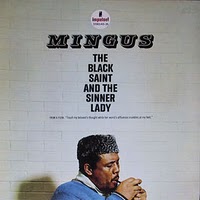 Charles Mingus had always incorporated elements of modern avante-garde composition into his bop-esque and free-jazz/avant garde work while holding himself firmly within the jazz idiom. Here, he cast aside all the restrictions of both genres and meshed the two into an unbelievably complex, and yet emotionally and musically stunning magnum opus. Unlike Mingus’ previous albums, rather than being merely a showcase for different tunes which may have had little to do with eachother melodically and structurally, this cd comprises the six movements of a symphony, and the music and ideas flow into eachother seamlessly. My favorite moment comes during the third track, “Group Dancers” when, after Mingus hints at an amazing melodic figure on the piano, the full ensemble plays it in all its glory. Anyone who loves music is missing something if he or she has never heard this milestone of melodic ingenuity. –Zach
Charles Mingus had always incorporated elements of modern avante-garde composition into his bop-esque and free-jazz/avant garde work while holding himself firmly within the jazz idiom. Here, he cast aside all the restrictions of both genres and meshed the two into an unbelievably complex, and yet emotionally and musically stunning magnum opus. Unlike Mingus’ previous albums, rather than being merely a showcase for different tunes which may have had little to do with eachother melodically and structurally, this cd comprises the six movements of a symphony, and the music and ideas flow into eachother seamlessly. My favorite moment comes during the third track, “Group Dancers” when, after Mingus hints at an amazing melodic figure on the piano, the full ensemble plays it in all its glory. Anyone who loves music is missing something if he or she has never heard this milestone of melodic ingenuity. –Zach
Cal Tjader “Amazonas” (1976)
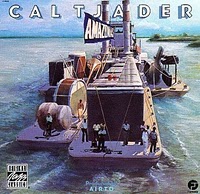 A great Brazilian set from Cal Tjader quite different than most of his other work of the time. Although Cal spent most of his time at Fantasy Records working in a mixture of jazz and Afro-Cuban styles, he steps off here in a very Brazilian 70’s mode one that has some great links with jazz trends going on in Brazil at the time. Production is by Airto and arrangements are by George Duke and there’s a wonderful crossing of Rio and California in the set – one that uses keyboards from Egberto Gismonti, flute from Hermeto Pascoal, guitars by David Amaro, and trombone from Raul De Souza. Dawilli Gonga aka george duke plays some especially nice keyboards on the set and titles include a great version of Joao Donato’s “Amazonas.” – orgyinrhythm
A great Brazilian set from Cal Tjader quite different than most of his other work of the time. Although Cal spent most of his time at Fantasy Records working in a mixture of jazz and Afro-Cuban styles, he steps off here in a very Brazilian 70’s mode one that has some great links with jazz trends going on in Brazil at the time. Production is by Airto and arrangements are by George Duke and there’s a wonderful crossing of Rio and California in the set – one that uses keyboards from Egberto Gismonti, flute from Hermeto Pascoal, guitars by David Amaro, and trombone from Raul De Souza. Dawilli Gonga aka george duke plays some especially nice keyboards on the set and titles include a great version of Joao Donato’s “Amazonas.” – orgyinrhythm
Vince Guaraldi “A Charlie Brown Christmas” (1965)
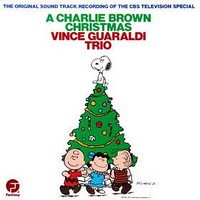 This is a near perfect Christmas album, and is rightly considered as one of Vince Guaraldi’s greatest works. In my house at least, no Christmas can be complete without this seasonal slice of musical beauty. From the first few notes it sets a mood so completely and utterly that the spell isn’t broken until the album finishes and the room goes silent once more at its conclusion. It’s a beautiful album which is as wistful and melancholy as it is joyful. Not that the music itself is sad, but there’s something about this album which never fails to get me choked up. Perhaps it’s the fact that this music is all tied up with my childhood memories of the Charlie Brown Christmas special, which has to be one of the bleakest, most depressing television programs ever foisted upon the impressionable youth of North America. However, all this heaviness is wonderfully offset by the gorgeous “Skating”, which has always been my favourite song on this album. What more can I say? For me this is a deeply moving and emotional album despite the lurid cartoon characters which populate its cover. Beautiful, essential, golden. –Deadlybreakfast
This is a near perfect Christmas album, and is rightly considered as one of Vince Guaraldi’s greatest works. In my house at least, no Christmas can be complete without this seasonal slice of musical beauty. From the first few notes it sets a mood so completely and utterly that the spell isn’t broken until the album finishes and the room goes silent once more at its conclusion. It’s a beautiful album which is as wistful and melancholy as it is joyful. Not that the music itself is sad, but there’s something about this album which never fails to get me choked up. Perhaps it’s the fact that this music is all tied up with my childhood memories of the Charlie Brown Christmas special, which has to be one of the bleakest, most depressing television programs ever foisted upon the impressionable youth of North America. However, all this heaviness is wonderfully offset by the gorgeous “Skating”, which has always been my favourite song on this album. What more can I say? For me this is a deeply moving and emotional album despite the lurid cartoon characters which populate its cover. Beautiful, essential, golden. –Deadlybreakfast


